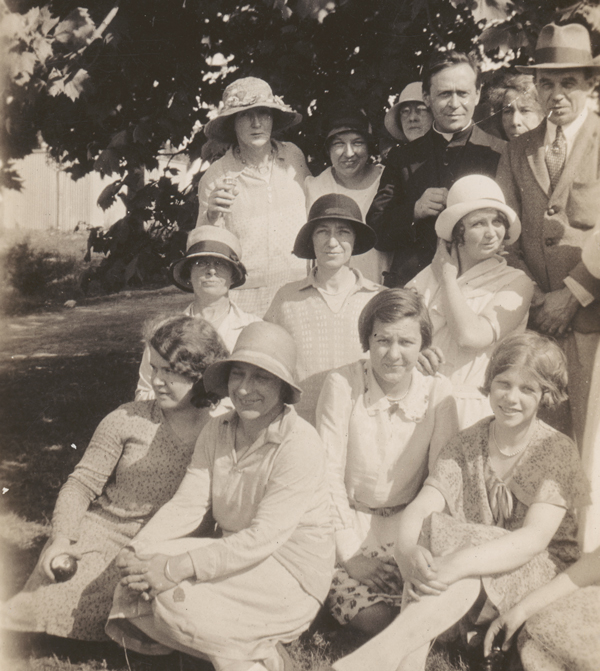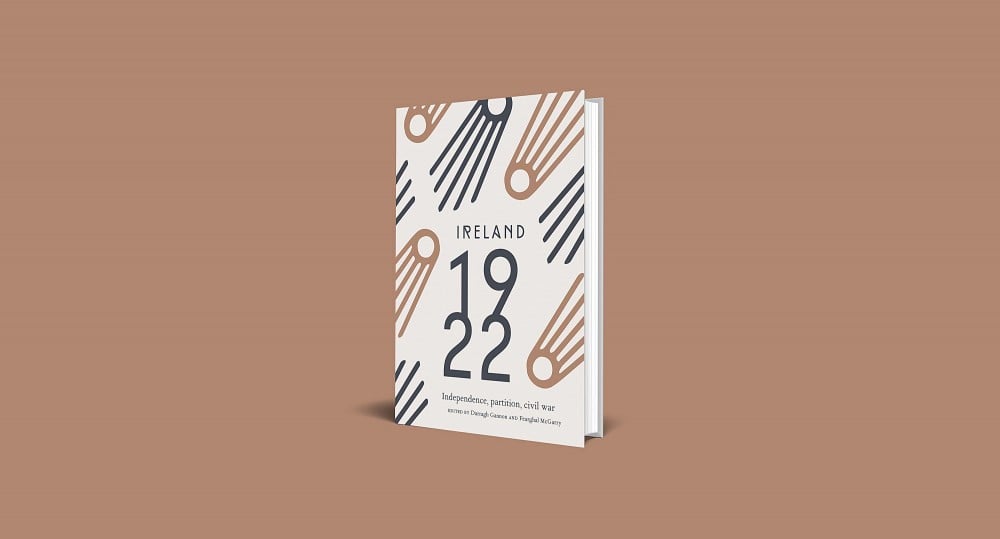30 November 1922: Cumann na mBan’s Telegram to W.T. Cosgrave
Irish Australians and the Civil War
By Dianne Hall
As the news of the deteriorating condition of Mary MacSwiney reached Australia in November 1922, the Sydney Ethna Carberry branch of Cumann na mBan swung into action in the only way available to it—by sending a cable of protest to W.T. Cosgrave. Reported in the Melbourne Advocate on 30 November 1922, the actions of the Sydney Cumann na mBan were directed particularly at raising local awareness about the treatment of women like MacSwiney as well as at putting pressure on the Cosgrave government from afar. The news of Mary’s release from prison, and the execution of Erskine Childers, broke on the same day in Melbourne.¹ While there was widespread condemnation of the execution of Childers and the treatment of MacSwiney, Irish Australians remained divided over the civil war in Ireland throughout 1922.
At the beginning of the year Irish Australians were pleased that the conflict in Ireland seemed to be over. In the main they were optimistic that the negotiated Treaty would mean most Irish people would have a similar relationship with the British Crown as was enjoyed by Australians. By this time there were only a relatively small number of Irish-born people living in Australia. The majority of the membership of various state-based Irish organisations such as the Melbourne Celtic Club, the Queensland Irish Association, or the various branches of the Hibernian Australasian Catholic Benefit Society and the Self-Determination for Ireland League of Australia were among the almost twenty percent of white Australians who were the descendants of migrants who had arrived from Ireland in the mid to late-nineteenth century.² The Sheehy family of Sydney was not unusual. Australian-born Madeline Margaret Sheehy was a medical student when she was president of the Sydney Cumann na mBan and signed the cable of protest to Cosgrave in 1922. That year her Irish-born father, John, was president of the Irish National Association in Sydney.³
Australian Irish organisations enthusiastically sent delegates from each state to the Irish Race Congress in Paris in January 1922, where the news of the growing divisions over the Treaty was received with some bewilderment. Fr Maurice O’Reilly, the Australian national delegate to the conference, while privately expressing unease over the Treaty, clashed at the conference with Mary MacSwiney; she accused him of misunderstanding the Irish situation because he ‘viewed it solely from the standpoint of a British Imperialist’. Most of the rest of the Australian delegation, with the exception of the South Australian delegate T.J. Ryan, supported Michael Collins and the Treaty.⁴ While the majority of Irish Australians agreed with them, along with most of the Catholic Australian hierarchy, there were a number of determined individuals in most states who agreed with T.J. Ryan. These people remained committed throughout 1922 to supporting the anti-Treaty side through fundraising, letters and telegrams of support and later by the hosting of envoys and speakers. Their most vocal spokesperson was Daniel Mannix, archbishop of Melbourne, who provoked considerable mainstream criticism for his support of the anti-Treaty side.
Taking a contrary position to Mannix, Michael Kelly, archbishop of Sydney, and James Duhig, archbishop of Brisbane, were keen to play down any divisions that might threaten the social cohesion of Irish Australian communities. Duhig’s opinions on the Irish Free State were formed during his stay in Ireland in 1922, where he was present at the funerals of both Arthur Griffith and Michael Collins. After his return to Brisbane in early 1923 he began a correspondence with W.T. Cosgrave, sending him messages of support and asking for advice about requests for funds from anti- Treaty republican groups in Ireland.⁵
News of hostilities in Ireland throughout 1922 was communicated
through newspapers, letters, cables and by returning travellers.
The resulting split in opinion among Irish Australians meant that
former allies, friends and committee members in a range of Irish
organisations were now divided, with the anti-Treaty supporters
being in the minority. When anti-Treaty activist Kathleen Barry
visited the eastern states of Australia on a fundraising
tour in 1924, she noted that there were still former friends who
crossed the street to avoid each other in Brisbane, and she was
advised not to visit Adelaide because of the intensity of
divisions among Irish groups there.⁶
One of the most vocal groups supporting the anti-Treaty republicans was the Irish National Association. It was established in 1915 in Sydney by Australian-born Albert Dryer ‘to assist Ireland to achieve her national destiny and to foster an Irish spirit among the Irish portion of the community’, and later spread to Melbourne, Adelaide and Brisbane. In 1916 the Irish National Association passed resolutions that recognised and promoted ‘Irish sovereignty’ rather than supporting home rule.⁷ In Sydney, a branch of Cumann na mBan was established in 1919. This group held regular fund-raising events, sending the money raised to Cumann na mBan in Dublin. Both the Sydney Irish National Association and Cumann na mBan had active cultural and social programs, and from 1922 were vocal in their political support for anti-Treaty republicans. In June 1922 the Sydney Irish National Association and Cumann na mBan published a joint protest about an article in the Sydney Catholic Press that had stated that the majority of Irish Australians supported the Irish Free State. Both organisations categorically denied that this was their position in their signed rebuttal.⁸
In Melbourne, Archbishop Mannix’s outspoken stance against the establishment of the Irish Free State provided umbrella support to a number of anti-Treaty organisations. Fr James O’Dwyer established the Terence MacSwiney Gaelic League in 1920, running Irish language, dancing and cultural activities while supporting republican political groups in Ireland. Melbourne was also home to anti-Treaty groups such as the Irish National Association, Young Ireland Society and, from early 1923, Irish Republican Association. There was some overlap of membership between these organisations, with the Gaelic League and the Irish Republican Association working closely together. This network of organisations supported fund-raising for anti-Treaty causes and actively hosted delegations sent in 1923 and 1924 to raise funds for de Valera.⁹
Living so far from Ireland, Irish Australians in 1922 relied on
news that was often out of date by the time it arrived. They were
also limited in what they could do to support the efforts of both
sides in the civil war. Telegrams
such as those sent by the Sydney Cumann na mBan to protest the
treatment of Mary MacSwiney were one of the few direct actions
that they could take from such a distance. The threads of
connection through such correspondence were important, especially
when combined with fund-raising and public statements from
Archbishop Mannix. The support shown from Australian groups to the
anti-Treaty side led to two fund-raising tours
from anti-Treaty republicans in 1923 and 1924, which kept the
issue of Irish political divisions alive among Irish Australians.
Ultimately, however, the distance, and the draining of energy from
the conflict in Ireland, led to the
inevitable decline of many of these politically charged
organisations.
After 1926, although the Irish National Association continued in its condemnation of the Treaty, most Irish republican organisations either folded, or shifted their focus to concentrate on activities supporting local schools and charities. Madeline Margaret Sheehy worked for several years as a doctor before marrying and retiring from public engagement in Irish organisations. The Sydney Cumann na mBan continued into the 1930s, although by then it had shed the Irish name and was known as the Irish Women’s Club, its focus now on local Australian matters.¹⁰
Extracted from Ireland 1922 edited by Darragh Gannon and Fearghal McGarry and published by the Royal Irish Academy with support from the Department of Tourism, Culture, Arts, Gaeltacht, Sport and Media under the Decade of Centenaries 2012-2023 programme. Click here to view more articles in this series, or click the image below to visit the RIA website for more information.






















